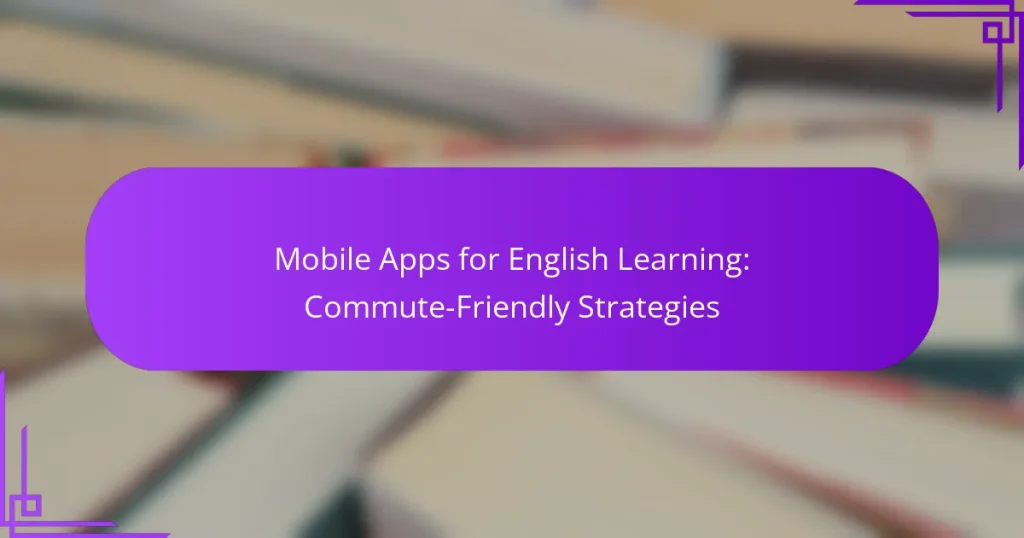Mobile apps have revolutionized English learning by providing flexible and engaging content that fits seamlessly into daily commutes. With the ability to practice language skills in short, manageable sessions, these apps make effective use of travel time. When choosing an app, consider features like offline access and gamification to enhance your learning experience on the go.
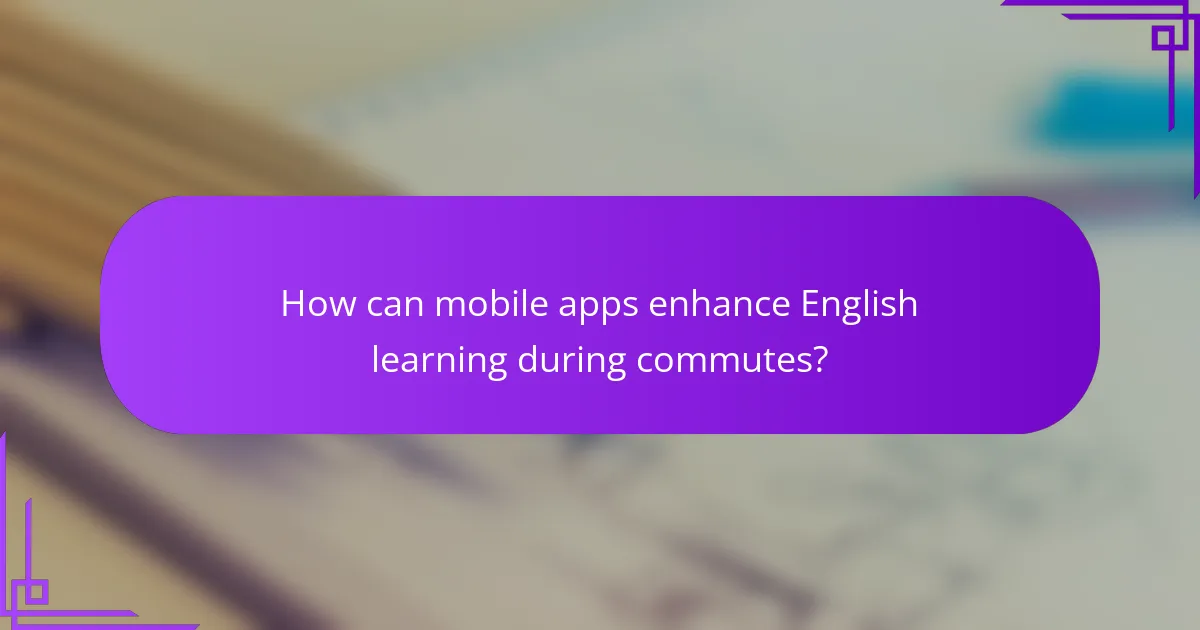
How can mobile apps enhance English learning during commutes?
Mobile apps can significantly improve English learning during commutes by offering flexible, engaging, and easily accessible content. These applications allow users to practice language skills in short bursts, making effective use of travel time.
Duolingo for bite-sized lessons
Duolingo is designed for quick, interactive lessons that fit seamlessly into a commute. Users can complete short exercises in just a few minutes, focusing on vocabulary, grammar, and pronunciation through gamified learning.
To maximize effectiveness, set a daily goal of completing a specific number of lessons or earning a certain number of points. This keeps motivation high and encourages consistent practice without overwhelming users.
Busuu for interactive practice
Busuu stands out by offering interactive language practice with native speakers. Users can engage in conversations and receive feedback, enhancing their speaking and writing skills effectively during commutes.
Consider using the app’s offline mode to download lessons before traveling, ensuring uninterrupted learning. Aim to participate in language exchanges to practice real-life conversations, which can greatly improve fluency.
Babbel for structured courses
Babbel provides a more structured approach to learning English, with courses tailored to specific goals, such as travel or business communication. Each lesson builds on the previous one, making it easier to track progress and reinforce learning.
Utilize the app’s speech recognition feature to practice pronunciation while commuting. Setting aside 10-15 minutes daily can lead to substantial improvements over time, making it a practical choice for busy learners.

What features should I look for in English learning apps?
When selecting English learning apps, prioritize features that enhance convenience, engagement, and effectiveness. Look for offline access, speech recognition, and gamification elements to maximize your learning experience, especially during commutes.
Offline access for travel convenience
Offline access allows you to download lessons and practice materials, making it easier to learn while commuting without relying on internet connectivity. This feature is essential for users who travel frequently or live in areas with spotty service.
Consider apps that let you save content for offline use, enabling uninterrupted learning during train rides or flights. Look for options that allow you to download entire courses or specific lessons based on your schedule.
Speech recognition for pronunciation
Speech recognition technology helps you improve your pronunciation by providing instant feedback on your spoken English. This feature is crucial for developing clear and accurate speech, which is a key component of language learning.
Choose apps that utilize advanced algorithms to analyze your pronunciation and offer corrective suggestions. Some apps may even include voice comparison tools that allow you to hear native speakers and adjust your speech accordingly.
Gamification for engagement
Gamification incorporates game-like elements into learning, making the process more enjoyable and motivating. Features like points, levels, and rewards can encourage consistent practice and help maintain your interest over time.
Look for apps that offer challenges, quizzes, and interactive activities that make learning feel less like a chore. Engaging with content through games can significantly enhance retention and make your daily commute a productive learning opportunity.
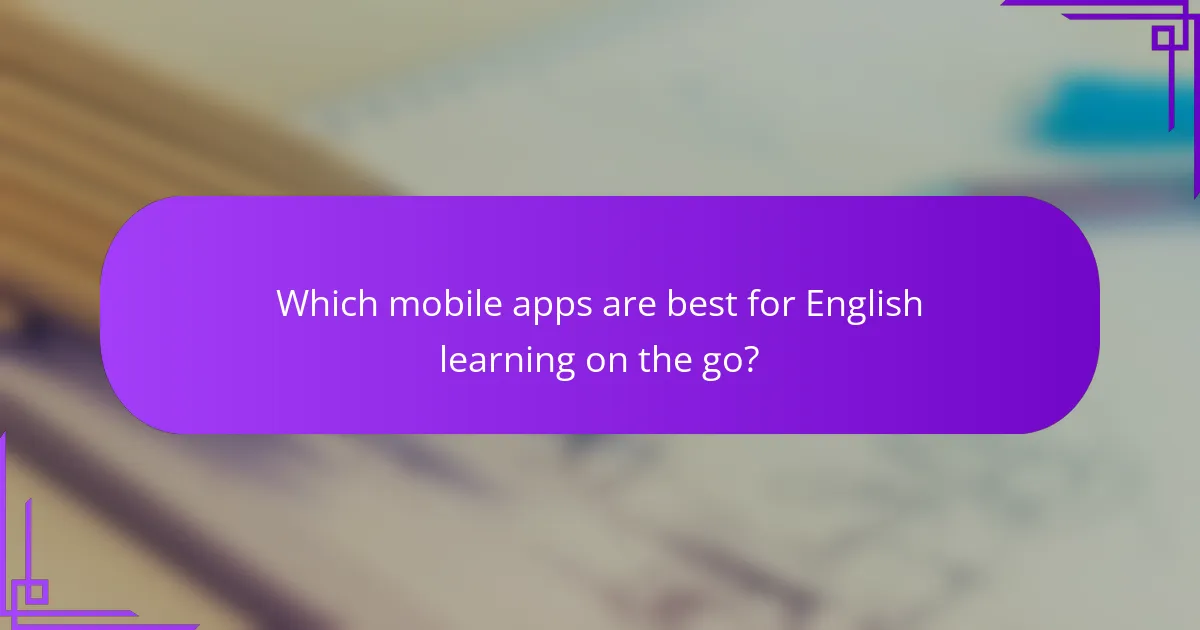
Which mobile apps are best for English learning on the go?
Several mobile apps excel at helping users learn English during commutes. The best options focus on vocabulary, immersive experiences, and grammar, catering to different learning styles and needs.
Memrise for vocabulary building
Memrise is designed to enhance vocabulary through engaging methods such as spaced repetition and mnemonic devices. Users can learn new words and phrases in short, manageable sessions, making it ideal for quick learning during a commute.
The app features a variety of courses tailored to different skill levels, allowing users to choose topics that interest them. For effective use, aim for daily practice sessions of around 10-15 minutes to reinforce memory retention.
Rosetta Stone for immersive learning
Rosetta Stone offers an immersive approach to language learning, emphasizing real-life context and pronunciation. The app uses images and audio to teach users through a natural language acquisition method, making it suitable for those who prefer learning through experience rather than rote memorization.
To maximize learning, engage with the app for at least 20 minutes per session. This duration allows for deeper engagement with the material, helping to build a strong foundation in conversational English.
Lingodeer for grammar-focused lessons
Lingodeer specializes in grammar and structured lessons, making it a great choice for learners who want to understand the rules behind the language. The app provides clear explanations and practice exercises that help users grasp complex grammatical concepts.
For best results, dedicate around 15 minutes a day to Lingodeer, focusing on one grammar topic at a time. This approach helps reinforce understanding and application of grammar in real-life situations.
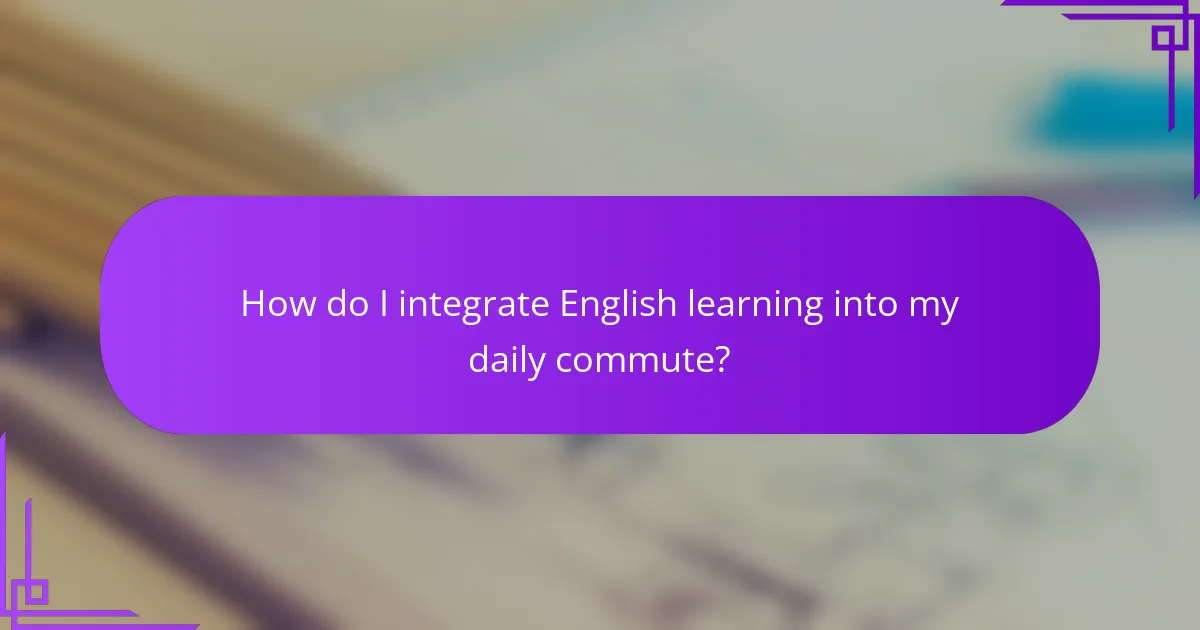
How do I integrate English learning into my daily commute?
Integrating English learning into your daily commute can be both effective and convenient. By utilizing mobile apps and resources, you can maximize your travel time to enhance your language skills.
Setting a daily schedule with apps
Establishing a daily schedule with language learning apps can help you stay consistent. Choose apps that allow you to set reminders and track your progress, ensuring you dedicate specific time slots during your commute for learning.
For example, allocate 15-30 minutes each day to practice vocabulary or grammar exercises. This structured approach can lead to significant improvements over time.
Using flashcards during travel
Flashcards are a practical tool for learning on the go. Mobile apps like Anki or Quizlet enable you to create digital flashcards that you can review during short travel intervals.
Focus on key vocabulary or phrases relevant to your daily life. Aim to review at least 10-20 cards per commute, which can reinforce your memory and comprehension.
Listening to podcasts for language exposure
Podcasts offer an engaging way to immerse yourself in English during your commute. Look for language-focused podcasts that cater to your proficiency level, covering topics that interest you.
Try to listen to episodes that are around 20-30 minutes long, allowing you to complete a full episode during your travel. This exposure to natural language use can enhance your listening skills and pronunciation.
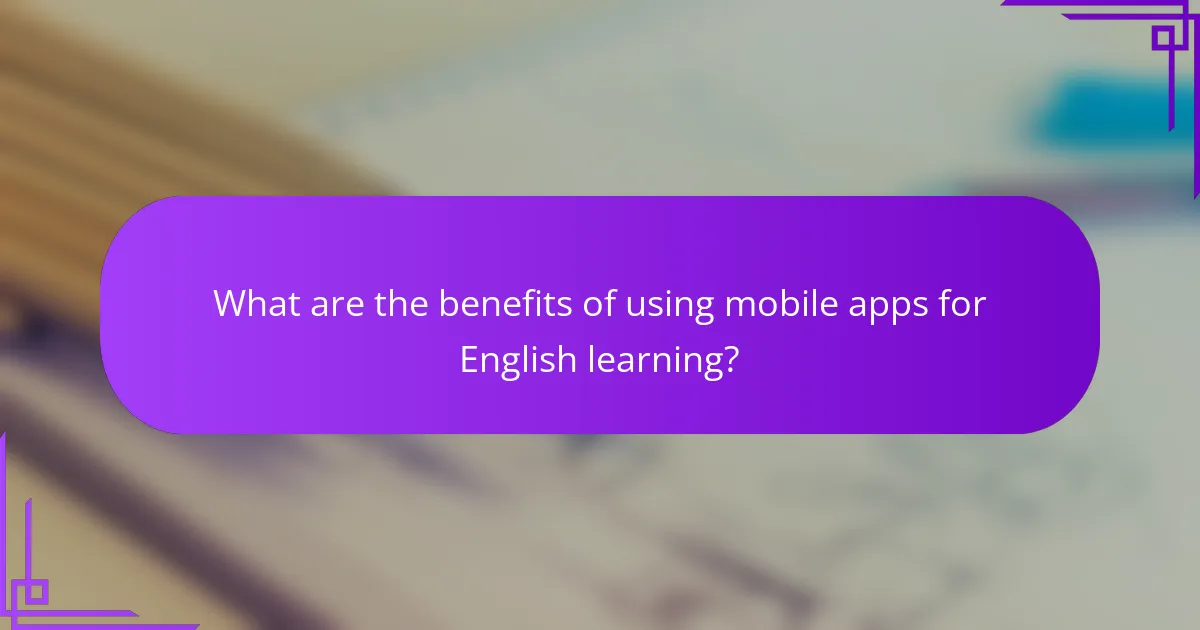
What are the benefits of using mobile apps for English learning?
Mobile apps for English learning offer convenience and accessibility, allowing users to study at their own pace and on their own schedule. These tools can enhance language acquisition through interactive features and personalized content tailored to individual needs.
Flexibility to learn anytime
One of the primary advantages of mobile apps is the ability to learn English whenever it fits into your day. Whether during a commute, lunch break, or while waiting in line, users can take advantage of short, focused sessions that maximize learning opportunities.
Many apps provide offline access, enabling learners to download lessons and practice without needing an internet connection. This feature is especially useful for those who travel frequently or have inconsistent internet access.
Personalized learning experiences
Mobile apps often include algorithms that adapt to the user’s learning style and progress, offering a tailored experience. This personalization can involve adjusting difficulty levels, suggesting relevant vocabulary, or providing targeted exercises based on performance.
Some apps allow users to set specific goals, such as improving speaking skills or expanding vocabulary, which helps maintain motivation and focus. Regular assessments can also guide learners in tracking their progress and adjusting their study plans accordingly.
